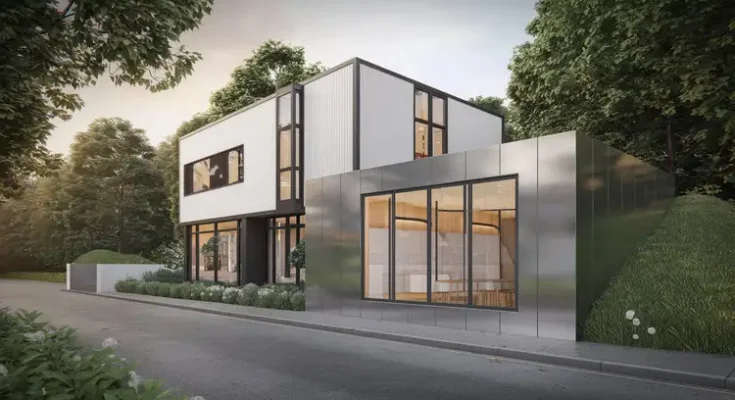Introduction
Homeowners benefit from the combination of residential and retail areas because their shop becomes more accessible while retaining all residential properties’ features. This architectural design suits entrepreneurs along with artisans including hobbyists who wish to maintain a short distance between their personal space and their professional space. This detailed resource investigates all elements of buying a modern house design which combines residential sections with commercial areas to maximize both efficiency and aesthetic quality.
1. Benefits of Combining Home and Shop Spaces
Two advantages emerge from uniting home and shop spaces which benefit individual needs together with business requirements.
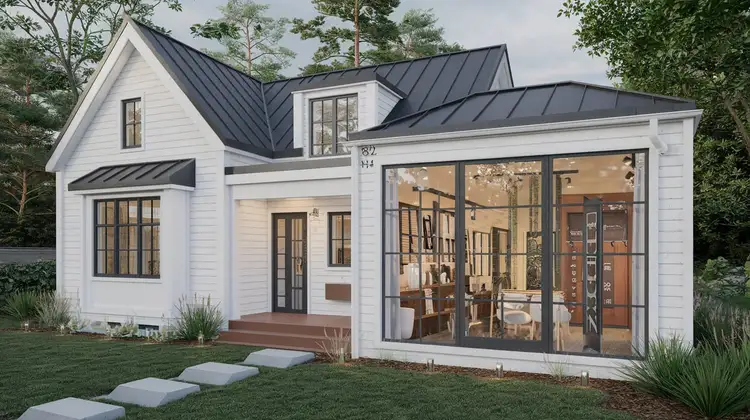
1.1 Enhanced Convenience
The strategic placement of shop facilities inside the house helps people avoid travel time which in turn saves them both time and transportation expenses. The close location between these spaces allows people to achieve better work-life integration while obtaining enhanced flexibility during daily duties.
Element | Description | Example |
Bathroom | Modern and functional bathroom with essential features. | Walk-in shower, minimalist design, ample storage. |
Storage Space | Organized space for storing household items. | Built-in closets, cabinets, or multi-use furniture. |
Dining Area | A dining space that serves as a hub for family meals. | Large dining table, stylish chairs, and mood lighting. |
Outdoor Space | Outdoor area for recreation, relaxation, and gatherings. | Patios, garden areas, or balconies with seating. |
1.2 Cost Efficiency
Using a single property as living and working space provides financial advantages because renters or owners avoid spending money on split residence or place of business ownership. The expenses reduce because residents split costs associated with standard maintenance along with utility services.
1.3 Customization Opportunities
The process of creating shop-integrated housing gives homeowners the chance to customize their floor layouts to satisfy their business operational needs and create efficient work environments.
2. Planning and Zoning Considerations
It is essential to understand both zoning laws and local regulations before starting construction of such a blended residential and commercial space.
2.1 Research Local Zoning Laws
Check municipal regulations that regulate combined residential-commercial property development in your area. Different geographical areas enforce either limitations or license rules on the combination of residential and commercial property development.
2.2 Obtain Necessary Permits
Obtain mandatory permits and local authority approvals that will guarantee proper adherence to building codes together with relevant rules. Safety standards as well as potential legal issues get prevented through execution of this step.
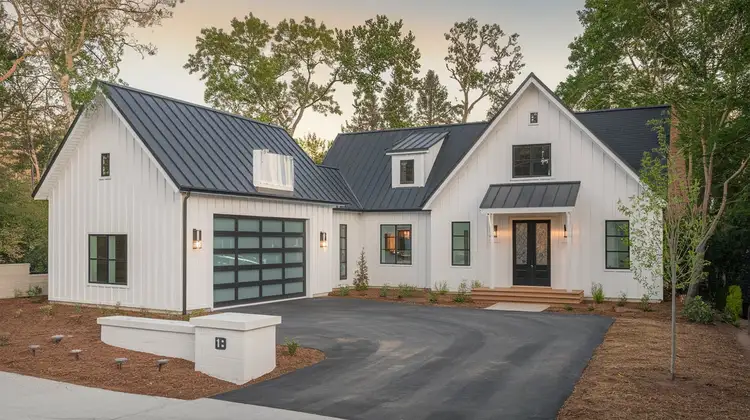
3. Designing the Integrated Space
The area should receive intelligent planning which delivers effective functionality and delightful comfort and design standards to residential and retail zones.
3.1 Define Clear Boundaries
A physical separation between home living spaces and commercial operations entities the area while keeping the environment organized. Walls together with partitions work well as visual boundaries to separate areas effectively.
3.2 Ensure Separate Entrances
The separation of entrances between home and shop spaces boosts privacy measures and professional appearance particularly when clients visit the store.
3.3 Optimize Layout for Workflow
You need to create a shop layout that helps process work efficiently by analyzing how equipment placement and storage and different operational movements connect to each other. The shop configuration leads to better efficiency alongside safer operating conditions.

4. Architectural Styles and Aesthetics
A selection of appropriate architectural style between home and shop areas produces expert design cohesion while creating an attractive look.
4.1 Modern Industrial Design
The combination of steel elements with exposed beams alongside oversized windows will create an industrial-modern design that functions well in domestic and business establishments.
4.2 Rustic Charm
The incorporation of wood together with stone materials creates a rustic feeling which produces comfortable surroundings in both residential and commercial zones.
Element | Description | Example |
Living Room | Spacious, modern living area with ample seating and style. | Sleek sofas, coffee tables, and warm lighting. |
Bedroom | A cozy retreat for rest, equipped with comfortable furnishings. | Plush bedding, storage solutions, and calming colors. |
Kitchen | A practical cooking space with all necessary amenities. | Stainless steel appliances, spacious counters, and smart storage. |
Shop Area | A functional shop area integrated within the home. | Display shelves, counters, and easy customer flow. |
4.3 Contemporary Minimalism
A design that uses minimalist elements with straight lines together with pale color schemes and organized spaces creates a practical area for multiple shop types.
5. Interior Design and Functionality
The structure must integrate features which fulfill the designated requirements of functional areas while guaranteeing comfort along with operational effectiveness.
5.1 Ergonomic Considerations
Adequate ergonomic furniture together with equipment should have top priority in the shop area to enhance both productivity and health standards. Caring office furniture including adjustable work tables with comfortable chairs significantly supports employee productivity.
5.2 Adequate Lighting
The shop area needs appropriate lighting combination of natural and artificial sources to deliver enough illumination for detailed work while protecting employee eyes. The workplace needs additional specific-task illumination to support employees at their locations.
5.3 Soundproofing Measures
Soundproofing solutions should be installed to prevent sounds from passing between the shop space and living areas so home peace is maintained.

6. Energy Efficiency and Sustainability
The introduction of environmentally friendly strategies creates both ecological advantages and financial benefits which accumulate throughout the years.
6.1 Insulation and Ventilation
Energy efficiency together with comfort exist because of proper insulation and ventilation which serve both the home and shop areas. Optimal temperatures together with good air quality become possible through such measures.
6.2 Renewable Energy Sources
The implementation of solar panels and wind turbines allows homeowners to access renewable power which both deploys non-renewable energy supplies and decreases power costs.
6.3 Sustainable Materials
Eco-friendly materials including recycled wood and metal will make the design sustainable and bring distinct character to the project.
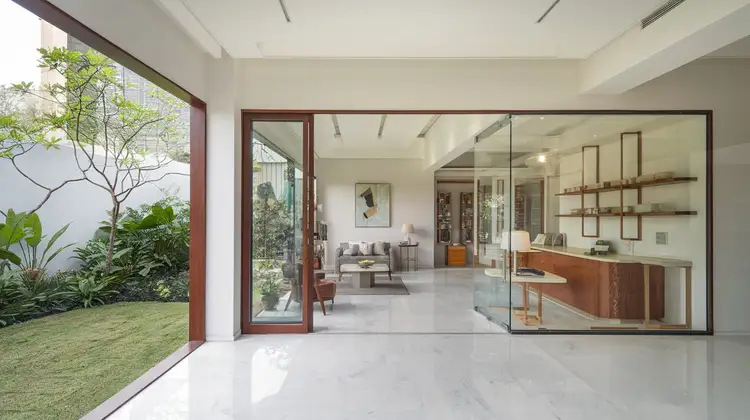
7. Safety and Security Measures
Protection of the residential and shop sections requires top priority.
7.1 Fire Safety Protocols
Install necessary functions of smoke detectors together with fire extinguishers and sprinkler systems. The area contains proper evacuation protocols for emergency situations in every zone.
7.2 Security Systems
A layered security system should include alarm systems combined with surveillance cameras so shop owners can protect their properties as well as the residential zone from unauthorized access.
7.3 Hazardous Material Handling
Every shop handling hazardous materials needs to establish correct methods for safe storage and labeling and waste disposal to avoid health dangers and accidents.
8. Technological Integration
Modern technological innovations work to increase both functional properties and visual attractiveness of dual purpose home-shop spaces.
8.1 Smart Home Features
The efficiency and convenience of the home and shop increases when smart home automation is combined with systems for lighting control, climate management and security functions.
8.2 High-Speed Internet Connectivity
The shop should have strong internet connections because business operations need them most especially when the business involves either online transactions or communication methods.
8.3 Digital Inventory Management
Shops that handle physical products should implement digital inventory management software because it creates operation efficiencies and minimizes human errors.

9. Accessibility and Inclusivity
Availability of the home and shop locations for all people improves functionality as well as creates an inclusive environment.
9.1 Step-Free Entrances for Easy Access
The implementation of step-free entrances offers better accessibility opportunities to people who need to navigate easily. Wider doorways alongside ramps support accessibility for additional people.
9.2 Adjustable Workstations for Comfort
User-friendly shop facilities become accessible through workstations with multi-level height adjustment which support various users.
9.3 Smart Controls for Convenience
The combination of voice-activated lighting and smart locks and automated climate control systems creates better accessibility for disabled customers together with those who have mobility restrictions.
10. Cost Considerations and Budget Planning
A budget generated with proper planning allows homeowners to conduct building or renovation projects for houses with shops within their financial means.
10.1 Affordable Yet Durable Materials
Lowering expenses in construction projects happens through the selection of quality materials that remain budget-friendly rather than expensive. Films, premade cabinets and engineered countertops serve both durability and cost-efficiency excellently.
10.2 Energy-Efficient Upgrades for Long-Term Savings
Making enhancements which focus on energy efficiency through appliances and insulation will lead to lowered utility expenses over a long period. Effective energy usage depends on LED technology combined with solar power systems.
10.3 Phased Construction to Manage Expenses
The process of building homes in successive stages enables householders to start construction with vital structures before implementing optional features which simplifies expense management.
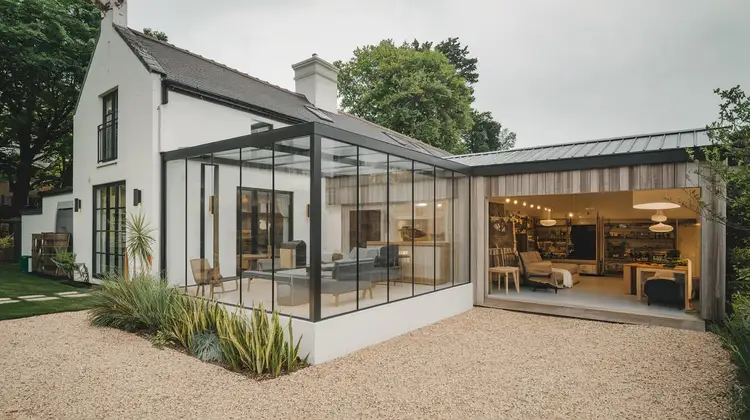
FAQs
According to law can one operate a shop business from their dwelling premises?
Zoning laws vary by location. Owners should review their local rules of compliance to start operating a retail shop from their home.
The business combination of residential and commercial areas requires proper steps to preserve privacy between these areas.?
Separate entrances together with partitions and soundproofing solutions protect the living space privacy from work activities.
The most appropriate businesses for establishment in residential home outlets include boutiques workshops online businesses salons and small retail stores?
The most suitable businesses for home-shop setups include boutiques and workshops combined with online ventures and salons and small retail stores.
I need a strategy to establish my shop as professional although it shares space with my house?
When combined with a clear entrance design and united branding and neat interior arrangements the shop displays a professional quality.
The procedure for maintaining sufficient ventilation becomes essential for home-based retail facilities?
Using exhaust fans and windows together with air purifiers helps ensure proper air circulation and maximum interior quality standards.
What method produces the best distinction between home and shop areas?
A combination of physical partitions and diverse flooring alongside contrasting color themes divides the shop from the home space effectively yet harmoniously.
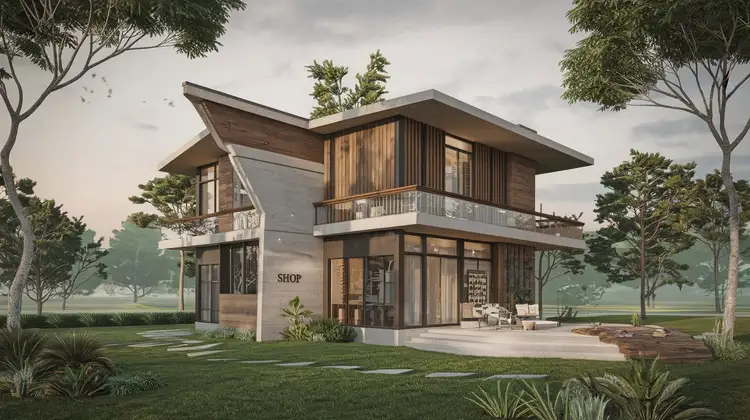
12. Conclusion
The innovative architectural concept combines a stylish shop with residential purposes to create an environment which meets both work and living requirements. The final design result depends on careful planning because it enables flawless transitions across the space no matter what choices are made regarding open planning, storage systems and energy efficiency systems. Homeowners who focus on accessibility and security and sustainability when planning their spaces will create modern efficient areas with ideal sustainability and longevity.
The combination of residential and commercial elements in a home with a shop creates opportunities for limitless progress, productivity enhancement and convenient accessibility for its inhabitants.

